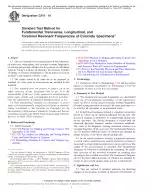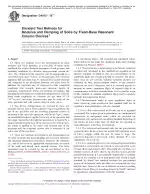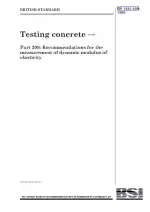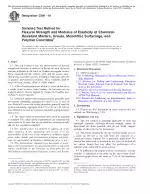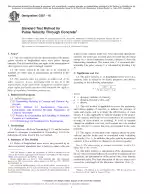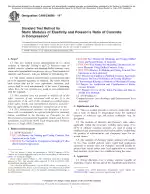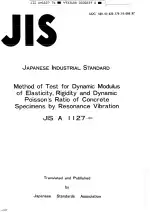ASTM C215-19 PDF Download
Standard ENStandard Test Method for Fundamental Transverse, Longitudinal, and Torsional Resonant Frequencies of Concrete Specimens
Also Known As:
ASTM C215-19 is a standard test method that aims to measure the fundamental transverse, longitudinal, and torsional resonant frequencies of concrete prisms and cylinders. The purpose of this test is to calculate the dynamic Young's modulus of elasticity, the dynamic modulus of rigidity (also known as the modulus of elasticity in shear), and the dynamic Poisson's ratio of the concrete specimens.
The test method is primarily used to detect changes in the dynamic modulus of elasticity of laboratory or field test specimens that are exposed to weathering or other potential deteriorating influences. It can also be used to monitor the development of dynamic elastic modulus as the test specimens mature.
It is important to note that the dynamic modulus of elasticity obtained through this test method is generally higher than the static modulus of elasticity obtained from another test method (ASTM C469/C469M), and the difference depends on the strength level of the concrete. The results obtained can also be influenced by the conditions of manufacture, moisture content, and other characteristics of the test specimens.
Comparing results from different modes of vibration or from specimens of different sizes or shapes is not advisable, as different computed values for the dynamic modulus of elasticity can result from these variations.
| Descriptors | concrete cylinders, concrete prisms, modulus of rigidity, dynamic Poisson's ratio, resonant frequency, ,Concrete,Acoustic Properties,Poisson's Ratio,Shear Modulus,Young's Modulus |
| ICS Codes | 91.100.30 - Concrete and concrete products |
| Language(s) | English |
| File Size | 194.6 KB |

